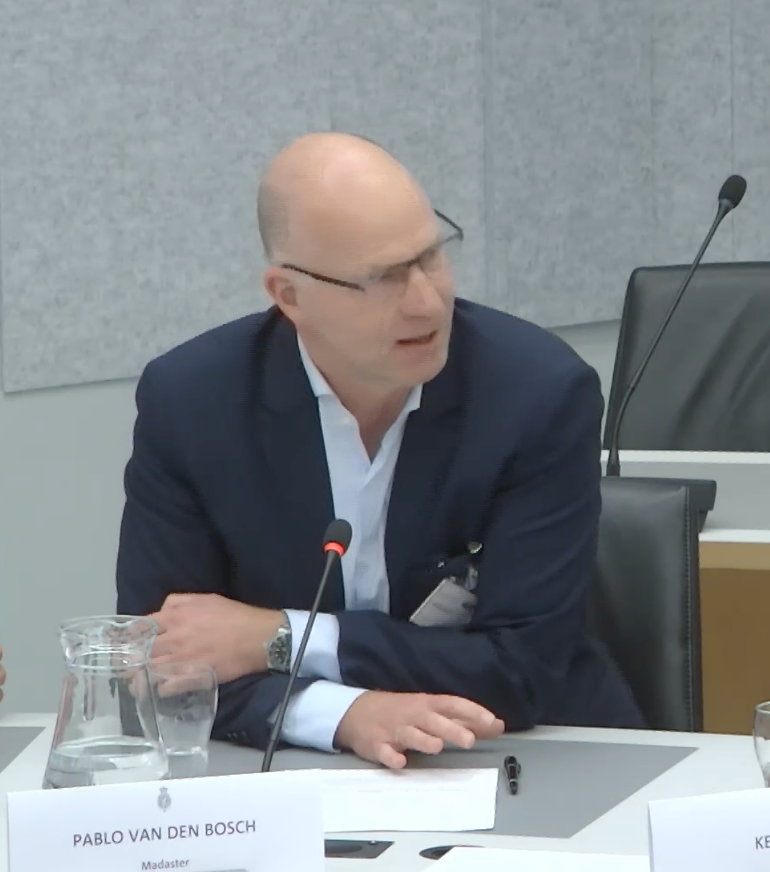ENVIRONMENT REGISTER LAUNCH APPROACHING
Author: Germien Cox, Madaster
If it were up to Harm Houwink, with one push of a button, designers would have access to an overview of usable and reusable buildings, on the basis of the design they have uploaded. How does he envisage this to work? And who is Harm Houwink anyway?
Harm Houwink is studying for his Master’s in Building Engineering at the Delft University of Technology and is working at Madaster for his thesis. He has been interested in building and technology since he was a child. He is intrigued by buildings and the process that precedes them. His study, therefore, was a logical choice. And yet, he does not aspire to become a structural engineer. According to Harm, a structural engineer’s impact on the entire process is too small. Despite that fact, he does greatly appreciate the profession of structural engineering, and he understands the essential role that engineers play with respect to a safe building environment. But on a personal level, he believes his talents to lie elsewhere. Please explain! Harm Houwink replies: ‘During an intermediate year, I ran a temp agency with some of my fellow students, and I got a taste of entrepreneurship. From that moment on, I realised that I did not want to become an engineer, but rather an entrepreneur in the construction sector.’ What prevented this enterprising student from quitting his studies and registering at the Chamber of Commerce? Harm Houwink: ‘In order to develop and implement successful, innovative projects within such a conservative sector it is imperative that you understand the related processes and technologies. Knowing how things work! This is what I am learning in Building Engineering at the Delft University of Technology.’ Harm Houwink therefore decided not to take any chances, just yet. He is studying a number of subjects at the university’s incubator (which is like a pressure cooker for start-ups), and meanwhile is happy to observe the entrepreneurship at start-ups in the construction sector, such as at BAM and Madaster.
Harm Houwink found Madaster on Google! He explains: ‘I was reading up on innovative developments in building construction and came across the book Material Matters by Thomas Rau and Sabine Oberhuber. In the back of the book, there was a mention of the Turntoo website. I decided to give them a call and, to my great surprise, got Thomas Rau himself on the line. He responded very enthusiastically and asked me to send him my CV.’ How lucky can you get? To straight away be able to talk to the entrepreneur, architect, innovator, inspirator, visionary and co-initiator of Madaster. And did this first contact lead to you working on your thesis subject at Madaster? Harm Houwink replies: ‘After a number of conversations with co-initiator Pablo van den Bosch and after spending a few days at Madaster, a thesis proposal was formulated.
What does your proposal include, exactly? What is this ambitious student investigating, in the coming months at Madaster? Harm Houwink replies: ‘Where Madaster is creating material passports, there are also markets for second-hand building materials. Products can be effectively registered in such a passport, and products can be traded on a certain market. Often lacking, however, is the link between the two. How could designers, architects or structural engineers utilise the materials and products contained within a building? In short, how do we shape the material passport in such a way that they can be used by designers?’
Could designers, themselves, not check what buildings are ready for demolition to see which materials would thus become available and then incorporate them in their design process accordingly?
Harm does not believe this would work, in practice: ‘Current working methods are different. Architects deliver a design, structural engineers make the calculations for this design and subsequently optimise it, then they look in the engineering index to see which materials are required. There are many materials available for them to choose from. It would be difficult to start a design from whatever is available within the built environment, which would require a completely different start of the designing process. It is therefore interesting to see how the material passport could be developed in a way that would suit designers and the design process. Also interesting would be to investigate how artificial intelligence could be applied so that designers, for example, would not need to look for materials in each building by hand. A computer system could make a preselection of materials and products.’ This sounds rather complicated, but according to Harm this functionality could ‘simply’ be incorporated in an algorithm.
Is this trainee going to do this all by himself, behind a desk at Madaster Services, over the coming months? Harm replies: ‘Fortunately not! I’m being coached at Madaster and by Winvision, a professional IT company with developers and IT system architects. I’m also supported by my thesis committee, and I’m hoping to speak with many interesting people, over the months to come, who can help me in my research, including engineers, architects, building owners and people from the government.’
I’m curious to see what this collaboration between Madaster and Delft University of Technology will bring. What is Harm’s opinion about Madaster’s role, on an educational level? Harm: ‘Madaster is a good example for students. It shows that materials indeed can be reused. All too often, people think that reuse is cumbersome, and now we can show that is can be done. We could perhaps cause a change in awareness. And, from the other perspective, education could also contribute to developments at Madaster. For example, the Building Engineering department at the university has a wealth of information on the use of specific materials. How to design using timber, steel and concrete, among other things. That knowledge could be very valuable for Madaster, to translate it from theory into practice.’
Hopefully, more students like Harm Houwink will come to Madaster, in the future. Luckily, there are also ways in which Madaster can actively contribute to achieve this. ‘Because,’ as Harm suggests, ‘Madaster could promote itself at the Delft University of Technology by sponsoring the students’ union or holding presentations during lunch lectures at the students’ union. There are more companies that do so.’ These are all good ideas. Meanwhile, Harm is working hard to finish his thesis, in order to be ready to present his research results at the anniversary of the Madaster Platform on 29 September 2018.
To be continued!



